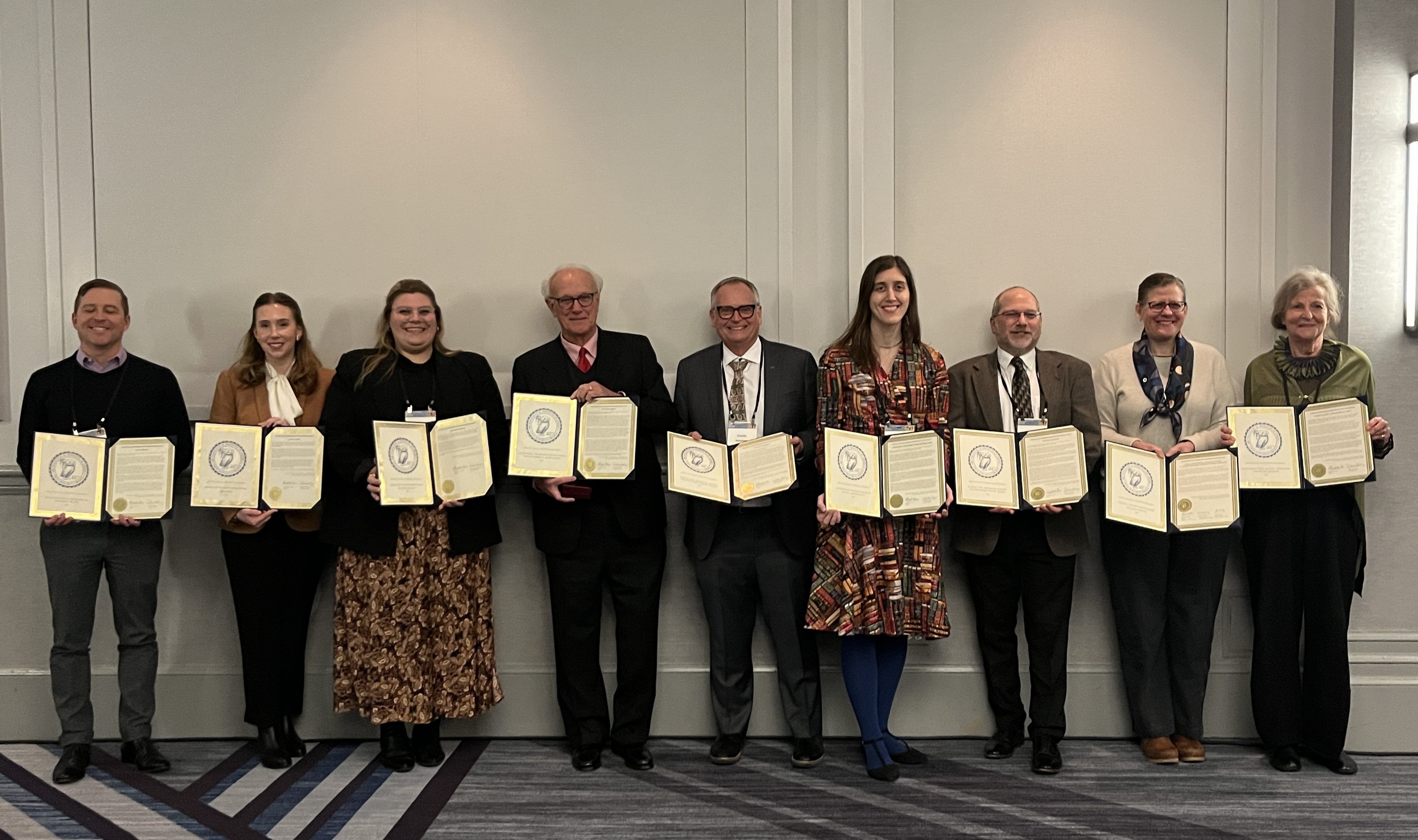January 31, 2024

Congratulations to the individuals, projects, and publications that received awards at the 2024 AIA Award Ceremony in Chicago, IL! Are you interested in applying for any upcoming AIA Awards with spring deadlines (February-April)? We have reached out to last year’s winners to learn about their projects, experiences, and what drew them to the field of archaeology.

Susan Katzev and Helena Swiny
Award: Anna Marguerite McCann Award for Fieldwork Reports
Deadline: March 15, 2024
What drew you to archaeology?
Susan – My parents, a physicist and a librarian, on their honeymoon, drove a Model T Ford from Missouri throughout Mexico the first year the Panamerican highway opened to visit Aztec and Toltec ruins. Their passion for archaeology rubbed off on me. I was headed for a career as a sculptor and was showing my art in the reception room of Swarthmore College in my sophomore year when Professor Martin Oswald told me he had just attended a lecture by a young archaeologist who was looking for an artist to join his upcoming summer excavation in Turkey. Curiously, the site was a Byzantine ship lying 120 feet under the Mediterranean off the Turkish coast. I worked for George Bass altogether 6 summers, meeting my future husband Michael Katzev, who went on to direct excavation of the Kyrenia ship off the north coast of Cyprus.
What’s next for you professionally?
Susan – I am not an academic. Along with a team of over 50 scholars I am working with co-editor Laina Wylde Swiny to complete to more volumes describing the excavation. The second will present the cargos not discussed earlier, while volume III tells of building the ancient ship in a manner the exact opposite of the “frame-first” construction we use today.
How did you get started with your publication?
Susan – My husband Michael led a survey along the coasts of Cyprus, following up on wreckage sports divers had reported around the shallows of the island. The American Embassy sponsored him to give a public lecture on the potential of taking archaeology under water, describing a wreck as a time capsule for its period. After the talk, an embassy Marine guard told Michael that he had dived on a deep wreck with a man from Kyrenia (Andreas Cariolou). We contacted Andreas who directed our boat to anchor over the site. In our diving gear we descended 90 feet. There, on the flat seabed, surrounded in eel grass, rested a mound of ancient amphoras. It was the tombstone marking a shipwreck from the years following the death of Alexander the Great. Michael had directed its excavation in 1968-9, after which we raised the hull, preserved it, and rebuilt it on display in Kyrenia Castle, along with the finds it contained.
Give us the quick public-facing elevator pitch about your award-winning publication:
Susan – Step into the past on board an ancient merchant ship sailing the waters of the eastern Mediterranean Sea in the years following the death of Alexander the Great. His generals are fighting over who should inherit his kingdom, while 4 sailors in a 50-foot boat make a living trading foods, iron, and millstones along the coasts out of their home port, the island of Rhodes.
Questions? Learn more about AIA Awards here or reach out to awards@archaeological.org